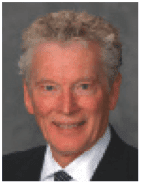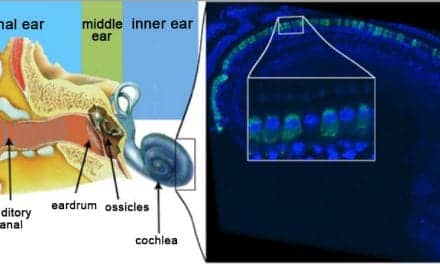BY Dennis Van Vliet, AuD
Part of my job is to travel and participate in continuing education presentations. As a result, I found myself flying from Los Angeles to New York City for a mid-week meeting with professionals from the VA and government service agencies in February. The timing was such that I was to fly out on Wednesday, and after my talks Friday morning, fly back home to arrive in time for dinner.
What I didn’t plan on was what the Weather Channel called “Winter Storm Nemo” that came up after I arrived in New York; 24 hours before the storm was to arrive, airlines started predicting airport closures, and began cancelling flights. By the time my flight was cancelled, there was no other option but to delay departure for 24 hours, hoping that conditions would clear up by the following day. As the rain changed to freezing rain, I found myself walking on a slick sidewalk with a colleague heading to a store to pick up some supplies for the unplanned extra night stay.
I’m a second-generation California native. When I encounter snow, it is typically when I seek it for recreation or brief encounters on business trips. As a result, I’m not particularly facile in walking on icy surfaces. I felt very much out of my element heading in the direction of Central Park with my head down, and feeling the icy precipitation pounding on my scalp, and not at all sure when I would take a spectacular fall. Luckily, that didn’t happen.
The Fear of Losing Control
Feeling out of control, and out of our element, isn’t a comfortable sensation. It made me think about people who may be at the point of realizing they have a hearing loss that is to the point of creating communication difficulties for them. They must feel out of their element, and unsure of their next steps.
If they are aware of the hearing loss, they may start paying attention to the difficulties they are having, and may react by changing some behaviors, such as avoiding difficult communication situations. Things may not be too difficult in many situations, so they are bargaining a bit with reality and mostly ignoring their hearing loss. At that point, we probably cannot offer too much to these individuals beyond education, counseling, and assessment if they find their way into a diagnostic pathway.
When hearing loss progresses so that communication difficulties become more obvious, the affected individuals start using more active coping mechanisms, and may finally be ready to take some corrective action. These people are now very likely out of their element.
Providing a Focal Point for Rehabilitation
What guidance is available for them? They may turn to friends and family, their family physician, or they might be looking online. The average age of those first acquiring hearing aids continues to be in the late 60s to early 70s. Not the tech savvy Baby Boomers yet, but many are online, or have family who are online and will help.
The online landscape itself can be overwhelming,. However, with a little patience and a little skepticism, some reasonable information can be acquired, and they may end up with some good basic background information. Whether they end up in one of our offices as a result of a physician referral, family, or friend suggestion, or from an online listing, they likely have gained enough information to make some assumptions. One of those assumptions may be that hearing aids have commodity-like characteristics: They may expect that hearing aids are like any article of trade that may be acquired in a variety of places with not much difference in the outcome, or benefit from the purchase.
How do we counter that assumption? Maybe we are out of our element in doing so. Do we emphasize product and features over the professional services needed to select, fit, and maintain hearing aids? It can be difficult to not be led down that path. A patient may have a friend who has a specific brand, or may have read about a certain feature and start a line of questioning that reinforces the commodity element.
Talking about a brand and advantages of the features offered is easier than discussing our skills and expertise without sounding arrogant. I find that the product questions need to be directly answered, but that the discussion needs to be redirected to the specific needs of the patient, and what elements of rehabilitation, including hearing aids, that are necessary for their individual problem. In so doing, the process—not the product and any commodity misconceptions—is the central theme. If a brand is important to a patient, I think it is fine to emphasize the integrity and research focus of the manufacturer as appropriate, but to stick with the comprehensive patient-centered approach as the primary discussion track.
The Final Word? Providing an experience for our patients that allows them to gain a comfortable level of knowledge about their needs and how to best treat them not only sets the stage for a good professional relationship, but focuses the patient on the process and the effort they need to invest to be successful—not on a specific product shopped for like a commodity. As a result, they are empowered to be “in their element” of making appropriate decisions about their hearing healthcare, and on the right track for appropriate care.

|





